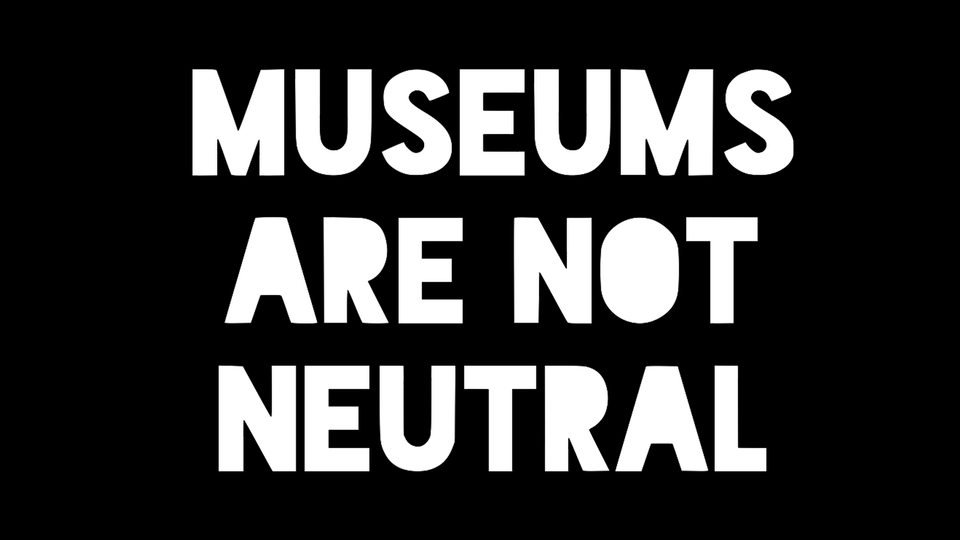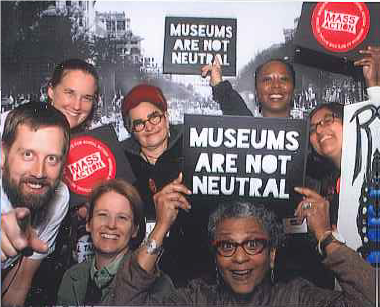
Science Museum of Minnesota’s Statement on Equity and Inclusion
Hello . . . I’d like to introduce you to the Science Museum of Minnesota’s Statement on Equity and Inclusion.
Our efforts to draft and bring to fruition a signed, sealed, delivered, and approved Statement on Equity and Inclusion took almost two years and involved many people representing multiple divisions within the Science Museum of Minnesota (SMM) and the Board of Trustees.
We were a committed group of staff who were passionate about the equity work we were involved with at SMM and in other aspects of our lives. We hope sharing our trajectory as we created the Statement, the subsequent dynamics that emerged in the drafting and approval process, and the insights we gained, will be useful to others in the field moving forward.
Our experience and process are ours alone. They took place within a particular time, place, and context. They are not prescriptive. It is my intent to describe a narrative that reflects our collective experience, to share it with colleagues, and to use it as a tool within our own institution. We hope this narrative provides SMM with a basis for individual and institutional reflection and discussion at the board and staff level and, when appropriate, for discussion with additional audiences.
The Statement on Equity and Inclusion was adopted by Science Museum of Minnesota’s Board of Trustees March 28, 2018 and is published on the museum’s website.
The catalyst for creating the Statement was two-fold: many staff at our museum were involved in critical conversations about equity and inclusion, and we wanted an internal and external statement on equity that would be on par with the museum’s existing Statement on Evolution and on Statement on Climate Change. The two existing Statements were created over a decade ago and serve as an indicator to staff and stakeholders that these large-scale societal concerns are SMM’s concerns as well. Additionally, as part of our membership in The Twin Cities Large Cultural Organization Forum, a consortium of museums and performing arts institutions, we were asked to adopt their statement of diversity. SMM leadership has been active in this consortium since its inception. When we presented this statement of diversity to the museum’s Board of Trustees for approval, our board suggested we develop our own statement, one that reflected our mission, vision and values. With a newly approved strategic plan that has a strong emphasis on equity and inclusion and multiple efforts throughout the museum to actualize the plan, the president of the museum, Alison Brown, along with the Board of Trustees, directed us to create a new statement. Initially titled the Statement on Racial Equity, the board urged us to expand our thinking beyond racial equity as an indicator of our commitment to inclusion on a much broader scale.
The Statement on Equity and Inclusion is foundational to our work. It does not signify a new chapter in our work, it does not indicate a directional shift the museum is moving towards. It is calling out and supporting the work that SMM has been actively doing for decades.
The visible and tangible example of this commitment is clearly evidenced with the creation of the RACE: Are We So Different? exhibition. Developed in collaboration with the American Anthropological Association (AAA), the exhibition opened at our museum in 2007 and has traveled to over 60 museums across the country.
The development of the Statement is tangential to the RACE exhibition and to the multiple forms of equity-infused work already taking place within SMM. The language we use to define our work, internally and externally, continues to be the catalyst for on-going dialogue within our museum. As we continue to evolve as an organization that centers equity and inclusion at its core, we examine, question, and reflect on terminologies and definitions to clarify and guide our work.
Everything we aspire to and everything we are doing is conveyed in the words we use. These words provide us with a kind of historical lexicon that traces chronologies of how equity is perceived, valued, construed, and communicated in museums. The terms that hold these iterative conceptions of equity in museum initiatives are critical to many of us. They aptly describe and document where we are in our institutional process of cultural change that seeks to establish genuine equity. Terminologies associated with change can evoke excitement and discomfort. We have observed colleagues experiencing discomfort and confusion about what terms like white supremacy culture, and decentering whiteness mean within the context of our museum.
In critical race theory, white supremacy is defined as racial power to denote a system of structural or societal racism which privileges white people over others, regardless of the presence or the absence of racial hatred. White racial advantages occur at both a collective and an individual level, when individuals are compared that do not relevantly differ except in ethnicity.
Legal scholar Frances Lee Ansley explains this definition as follows:
“By ‘white supremacy’ I do not mean to allude only to the self-conscious racism of white supremacist hate groups. I refer instead to a political, economic and cultural system in which whites overwhelmingly control power and material resources, conscious and unconscious ideas of white superiority and entitlement are widespread, and relations of white dominance and non-white subordination are daily reenacted across a broad array of institutions and social settings.”
We have been using the term white supremacy at our museum for over a year and it has raised numerous questions and visible discomfort for some staff. We have been using it in documents that are shared broadly throughout the museum, in personal reflections that are also shared, and in discussions during meetings. The worry this term evokes is palpable, yet few have asked for clarity about how it is being defined and how it applies to our work and to the culture at our museum. I can count on one hand the times when the term has been challenged and when productive, albeit difficult, conversations have ensued. What has become clear to me is that the questions and the discomfort surrounding terminology about white supremacy culture and decentering whiteness have taken place within an absence of a contextualized narrative history of the racialized hierarchies within this country.
I posit that we can use the possibility of a collective impact of change within our museum culture to support a range of perspectives and levels of engagement and comfortability with how we express and articulate our work. I am not suggesting that we discount the discomfort my colleagues experience. I suggest paying attention to it so that we can direct this discomfort towards a shared goal of organizational growth. I have observed that conversations come to a grinding halt when certain phrases are used and people become uncomfortable. The work of equity belongs to everyone; it is complex and it embodies the discomfort that informs change. This is our challenge, conversations about the complexities of change are often self-stifled because they are hard; people feel threatened and don’t know how to have the conversation. It is my hope that we find a way to regard the discomfort inherent in equity/ change work as a resource, while using our awkwardness to build a culture of understanding.
We make incremental steps forward, and engage in numerous discussions in our attempts to build and support a common understanding with those who are willing to share their discomfort with terms such as whiteness, white supremacy, white privilege, white fragility, etc. These attempts, from me and others, to acknowledge individuals so they feel heard, validated, and comfortable, are also made with the hope that they will not sabotage our work nor slow its momentum, but rather support the work by finding their own way in. I’ve observed that with each iteration and new insight, a clearer articulation of the work results in the addition of new terms such as: decentering whiteness, injustice, privilege, and power or the deletion of once salient terms such as diversity. Critical colleagues who are less engaged in the process of institutional culture change frequently bristle at the emergence of these new iterations of terms and the concepts that they embody. I have been encouraged by white colleagues who are willing to have these difficult conversations—people who understand that supporting the dismantling of large systems of oppression will benefit the whole. I can’t speak for them individually or collectively, but it is my understanding from pointed conversations that some of my white colleagues do not perceive every word that calls out systems of oppression to be a threat to them or their positions within the organization. Their experience affirms that this is an achievable institutional goal.
On behalf of the Statement authors: Marjorie Beguette, Robby Callahan Schreiber, Lauren Causey, Liesl Chatman, Shona Ramchandani, and Evelyn Roning, it is my honor to introduce you to the Science Museum of Minnesota’s Statement of Equity and Inclusion.
